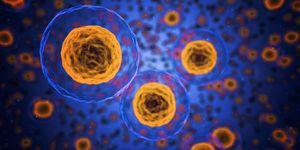Cannabinoid Hyperemesis Syndrome Is Helped by Hot Pepper Cream
A new research review suggests that capsaicin cream, rubbed into the abdomen, may help with the symptoms of cannabinoid hyperemesis.
Cannabinoid hyperemesis, characterized by unremitting nausea, vomiting and abdominal pain, is an occasional side effect of using cannabis. It usually affects long term daily cannabis users and is frequently unresponsive to standard antiemetic therapy. However, capsaicin — the active ingredient in chili peppers that gives them their heat — looks to be a potentially useful treatment.
Previous research in 2017 found that topical capsaicin “was associated with improvement in symptoms of cannabinoid hyperemesis after other treatments failed.” Although research involved only 13 patients, all “experienced symptom relief.”
In this new, bigger, study, University of Michigan researchers reporting in the American Journal of Emergency Medicine found that significantly more patients in the capsaicin group “experienced efficacy” compared to patients who did not (55 percent versus 21 percent).
Over two hundred patients, 25 of whom were under 21, were involved in the research. They joined the study when they went to emergency departments with vomiting and other stomach symptoms and were diagnosed with suspected or confirmed cannabinoid hyperemesis.
Applying the capsaicin cream to the abdomen resulted in shorter periods between the treatment and discharge from the emergency department than for those who didn’t receive the treatment.
However, while discharge was quicker, the treatment did not appear to “influence patients’ total number of medications received or total ED length of stay,” the study authors point out.
This study helps to highlight cannabinoid hyperemesis, which is often identified by a "diagnosis of exclusion," meaning doctors must try to rule out other causes of the symptoms such as gastrointestinal infection or IBS.
Five mutations that appear to contribute to cannabinoid hyperemesis were recently identified, but patients typically have several interactions with health professionals before being diagnosed, and most are hospitalized at least once.
Sources: Growth op, Science Direct









